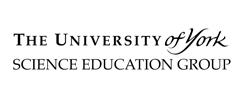- View more resources from this publisher
 University of York Science Education Group (UYSEG)
University of York Science Education Group (UYSEG)
Salters' Science Focus: Teachers' Guide 1
The Salters' Science Focus course provides a rich variety of different types of learning activities, which are described in sufficient detail to be taken and adapted into any Key Stage Three scheme of work. This guide covers Year Seven of the course Science Focus: the Salters’ Approach. It provides a suggested scheme of work for each of seven units of study.
Each unit begins with an overview which identifies the content and learning activities provided by the unit. This is followed by a series of lesson plans, with suggestions for managing the activities and worksheets for students.
*Paper chain - making and recycling paper. The context for this environmental chemistry module is paper: where it comes from, how it is made and why we are asked to recycle as much as possible. Underlying themes include sustainable production of raw materials, the careful management of manufacture to minimise waste and the importance of recycling.
*Out of this world - space travel, the Moon and other satellites. The major theme of this astronomy unit is how applications of science and engineering have enabled us to send people and equipment beyond the limits of our planet. The focus then moves on to uses of satellites in weather forecasting and long distance communications. The unit provides an opportunity to set up a ‘circus’ of short practical activities which students may carry out in any order. The information they collect can then be shown as a wall display to illustrate the topic.
*Switching on - an introduction to electric circuits. The context which introduces this physics unit is a comparison between a Victorian kitchen and a modern one, showing how electric-powered equipment reduces the labour of many tasks and allows some which were previously impossible. Hazards associated with ‘mains’ electricity are discussed. Students then work with low voltage models and learn to use circuit diagrams to represent their designs.
*Skin deep - functions and care of skin, hair and teeth. This biology unit deals with matters of personal hygiene and appearance.
*Having babies - an introduction to human reproduction. This biology unit begins with discussion about the changes which occur at puberty, with an emphasis on the wide variations between individuals. It continues with study of fertilisation, pregnancy and birth, including health care issues. Much of the content might be classified as ‘sex education’ and should be considered in relation to school policy and work covered by other departments.
*Making sense of IT - Sensors and logic gates in simple control circuits
*Neighbours - identification of plant and animal species. Students survey a familiar area for plants and animals. They use keys to identify what they have found, and consider uncertainties associated with incomplete evidence. They learn that species are not just distributed randomly, and consider the effect of changes in the environment
Show health and safety information
Please be aware that resources have been published on the website in the form that they were originally supplied. This means that procedures reflect general practice and standards applicable at the time resources were produced and cannot be assumed to be acceptable today. Website users are fully responsible for ensuring that any activity, including practical work, which they carry out is in accordance with current regulations related to health and safety and that an appropriate risk assessment has been carried out.
Downloads
-
Introduction 6.02 MB
-
Paper chain (teachers' notes) 1.84 MB
-
Out of this world (teachers' notes) 945.48 KB
-
Switching on (teachers' notes) 985.11 KB
-
Skin deep (teachers' notes) 1.47 MB
-
Having babies 1.44 MB
-
Making sense of IT (teachers' notes) 916.24 KB
-
Neighbours (teachers' notes) 3.57 MB
-
Introduction (activity sheet) 1.95 MB
-
Paper chain (activity sheet) 942.6 KB
-
Out of this world (activity sheet) 859.9 KB
-
Switching on (activity sheet) 1.43 MB
-
Skin deep (activity sheet) 1.29 MB
-
Having babies (activity sheet) 1.64 MB
-
Neighbours (activity sheet) 921.36 KB





